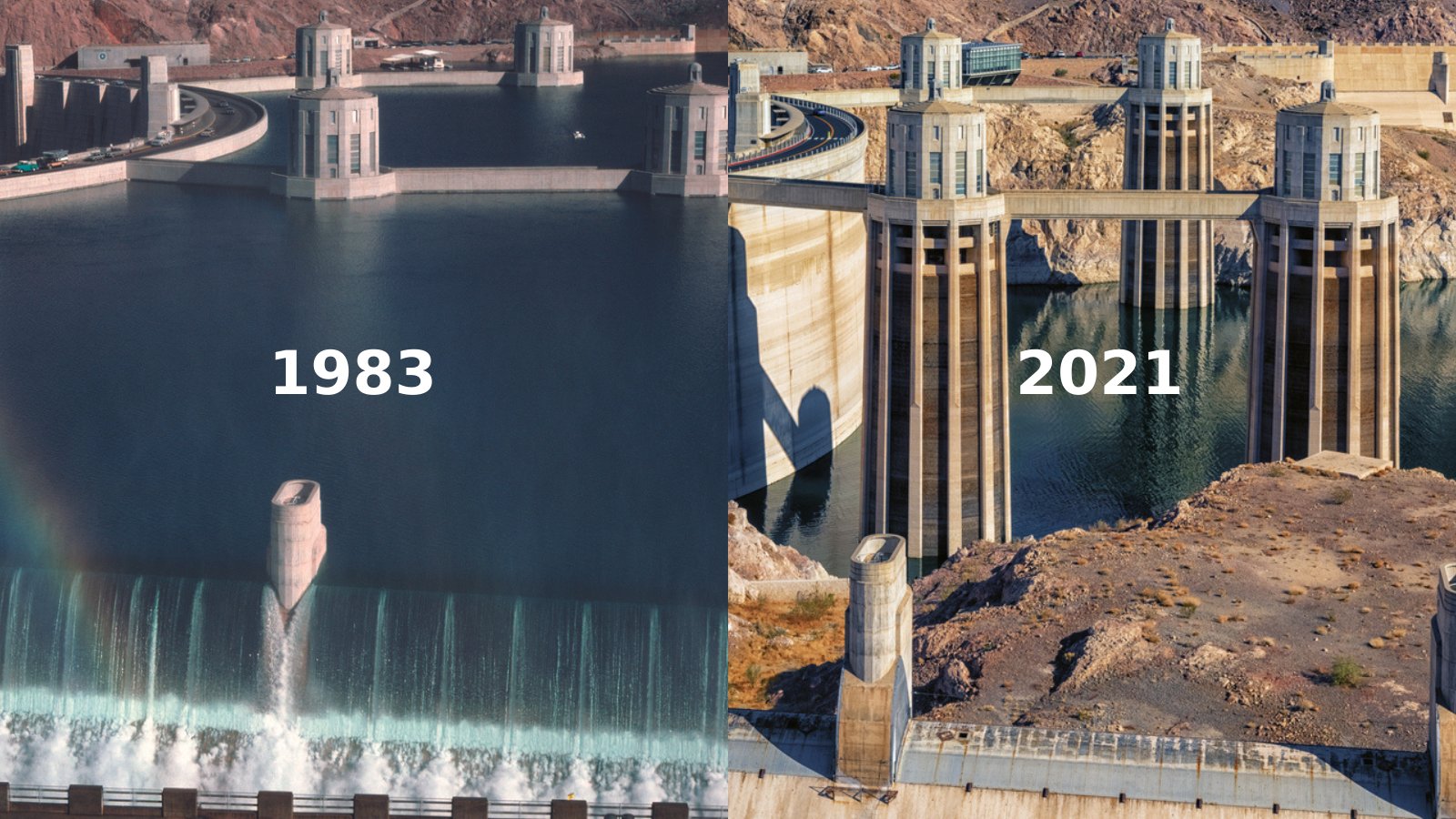I just heard the term “Megadrought” this week in the American West.
When I heard about this, I was driving and listening NPR for probably the first time since the 2021-22 school year ended in May. The report I was listening to claimed that it is the longest drought for some crazy large number of centuries.
I knew there have been an ongoing drought for years in the West and Southwest of this country. It seems like almost every year there are stories about how little snowfall there is in the mountains. They talk about the implications that will have for people, cities, and irrigation for crops. Certainly, this lack of water flowing from the mountains and lack of summer rain has contributed to the unprecedented number of devasting fires we have seen in California and other states. Lately, like this year, there has been a lot of photos, videos, and other graphics showing how low Lake Mead, created by the Hoover Dam, has gotten this year.
The reports, using the photos of Lake Mead and the megadrought term, seem to have gotten more dire this year. People that believe Climate Change science tend to be doomy and gloomy. President Biden is in this camp and has pushed legislation to begin seriously dealing with this issue. Those that don’t believe in it, claim it is all fake and the hubbub should be ignored or squelched. President Trump was clearly in this camp.
A google search revealed the following:
- Western
‘Megadrought’ Is the Worst in 1,200 Years – Scientific American
An exceptionally dry year in 2021 helped break the record. Before last year, a previous megadrought occurring in the late 1500s was the only other drought known to be worse than today. A megadrought is typically defined as a severe dry period lasting at least a couple of decades.
The current event has been strongly influenced by human-caused climate change, the study said. In fact, without the influence of global warming, today’s conditions probably wouldn’t be classified as a megadrought at all. - Rapid
intensification of the emerging southwestern North American megadrought in
2020–2021 – nature.com
A previous reconstruction back to 800 ce indicated that the 2000–2018 soil moisture deficit in southwestern North America was exceeded during one megadrought in the late-1500s. Here, we show that after exceptional drought severity in 2021, ~19% of which is attributable to anthropogenic climate trends, 2000–2021 was the driest 22-yr period since at least 800. This drought will very likely persist through 2022, matching the duration of the late-1500s megadrought. - Study
finds Western megadrought is the worst in 1,200 years – NPR
Western water managers were again hopeful for a change at the beginning of this winter. In December, California's Sierra Nevada had record-breaking snowfall, and big snowstorms blanketed the northern Rockies. But a hot, dry start to the year has since dropped snowpack levels to below average in many places.
Lake Mead and Lake Powell, the country's two largest reservoirs, are filled at only about one-third of their total capacity. Communities, ranchers and farmers have depleted groundwater stores to meet demands. - Water
Week: How To Farm In A Drought – NPR 1A
The western U.S. is in the middle of a 22-year-long megadrought and Greeley [Colorado] is just one of the towns where farmers are facing tough decisions over how to keep us fed when there's less water to go around.
There is a minim transcript for this broadcast. The 31-minute audio segment is worth listening to. It profiles 2 farmers talking about the challenges they face in trying to keep their family farms/ranches going.
In reading the above excerpts, I can see people discounting this as scientific hoo-hah. But with reservoirs, which we created to support the agriculture and the booming populations in the West, and ground water being depleted, I am not sure how we can keep putting our heads in the proverbial sands… which there seems to be more and more of these days.
 |
| A comparison of Lake Mead Water levels lasvegasnevada.gov |

NASA Satellite Images nbcnews.com

No comments:
Post a Comment